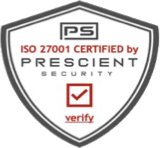Every legal entity is a business and, as such, every entity has specific business needs. From increasing the client portfolio and boosting Legal Recurring Revenue, onto streamlined operations and more efficient workflows; every legal entity has needs that must be met.
Fundamentally, the purpose of any legal entity is to deliver value to clients in order to earn repeat business from those clients. Client satisfaction improves client retention rates, which are vital to boosting Legal Recurring Revenue for the legal entity.
Among the most important needs for any legal entity are the need to maintain transparent business records, as well as the need to manage the all-encompassing responsibilities of day to day responsibilities for the entity. Responsible entity management and practice management are vital objectives for any legal institution to be successful.
What are legal entities?
Legal entities are defined as corporations, partnerships, trusts, and other forms of business entities. They enter into legally binding agreements as vendors, suppliers, or purchasers of goods and services, so that they may conduct their business.
Legal entities have corporate responsibilities to their owners, shareholders, and even various levels of government. A legal entity assumes the obligations of the contracts with which it enters, including agreements to borrow money, pay off existing debts, deliver earnings reports to shareholders, and submit business tax filings.
A legal entity can also file lawsuits, and may be named by other parties as a defendant in a lawsuit. Depending on the ruling in such a lawsuit, the legal entity may be financially responsible for the results of those legal actions.
What is entity management?
Entity management refers to the process undertaken to manage legal entities. In a nutshell, entity management describes how a corporation maintains records of vital business information in an orderly system to ensure the business remains in compliance with federal, provincial, and/or state laws.
Examples of entity management in practice include diligent records of minute books and corporate documents that report a company’s current and projected financial standing. The purpose of entity management is to ensure the corporation lives up to their responsibilities and obligations to owners, shareholders, and governments.
What is practice management?
Practice management describes the process of managing all business priorities to keep the legal entity running smoothly. Effective practice management enables legal entities to deliver on their primary objective of high client satisfaction rates.
When broken down, practice management encompasses everything from:
-
HR management
-
Finance and accounting
-
Business development
-
Technology procurement
-
Commission structures
-
Conflict resolution
-
Client communications
-
Working time management
Essentially, practice management is a process that improves collaborative workflows among all professionals employed by the legal entity. When practice management is implemented smoothly and efficiently, all business priorities are effectively managed. As a causality, a respectful amount of time and resources can be dedicated towards diligent entity management, evidenced in the form of up-to-date, accurate and transparent corporate governance.
How to use software to manage legal entities
Software and technology procurement are important aspects of effective practice management. Entity management software is one of the most important pieces of technology a legal entity can acquire. Why is it so important? Selecting the right entity management software delivers an effective, efficient, and innovative process to modernize entity management.
A cloud-based entity management solution provides an abundance of business value to a legal entity. All minute book records and/or corporate documents are uploaded into the cloud using the platform’s capabilities. There are many benefits to this approach, but two of the most significant deliver the greatest value to legal entities.
A cost and time efficient corporate record review process
First of all, as cloud-based software, all records uploaded into the platform can be viewed from anywhere in the world. As more executives embrace remote or hybrid work, a solution that enables your legal entity to service those clients at their convenience is far more likely to achieve high client satisfaction rates.
Suppose your legal office is based in Toronto, and your client is based in Berlin. Rather than arranging time to fly over to Berlin for an in-person meeting (an expensive flight, mind you), the entire review process can be conducted online. Your client can retrieve the records at their own convenience, or you can arrange a virtual consultation and use advanced search filters to bring up the records in a matter of seconds. Suddenly, an entire day or potentially two days of time to conduct that review is completed in one thirty minute session.
Troves of working hours to reinvest into growth strategies
Secondly, entity management software enables legal professionals to make more efficient use of their own time. Practice management skills teach professionals how to streamline their own workflows, and an entity management solution is one of the best ways to earn back valuable working time for all legal entity employees.
Some legal entities spend as much as $20k per year, per employee, simply to manage physical binders of minute book records and corporate documents. By modernizing the entity management process, all of that time and money spent on clerical tasks is substituted by the platform itself. As a result, all employees can reallocate their own time towards growth strategies that further the interests of the legal entity.


